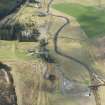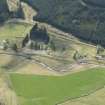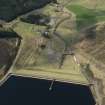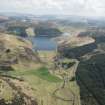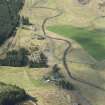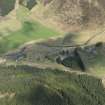Camps Reservoir, Prisoner Of War Camp
Prisoner Of War Camp (First World War)(Possible), Workers Camp (20th Century)(Possible)
Site Name Camps Reservoir, Prisoner Of War Camp
Classification Prisoner Of War Camp (First World War)(Possible), Workers Camp (20th Century)(Possible)
Canmore ID 332959
Site Number NS92SE 66
NGR NS 99548 22439
Datum OSGB36 - NGR
Permalink http://canmore.org.uk/site/332959
- Council South Lanarkshire
- Parish Crawford
- Former Region Strathclyde
- Former District Clydesdale
- Former County Lanarkshire
The construction of Camps reservoir was undertaken by German prisoners of war in the First World War. German soldiers, other than officers and senior NCOs, could be put to work that did not directly further the prosecution of the war. The camp which housed them is included in the 1919 'List of Places of Internment' in Britain, its colonies and dominions.
The location of the camp is not known but it is likely to have
occupied one of the terraces of the Camps Water, downstream from the dam site.
Information from HS/RCAHMS World War One Audit Project (GJB) 22 October 2013.
Project (March 2013 - September 2013)
A project to characterise the quantity and quality of the Scottish resource of known surviving remains of the First World War. Carried out in partnership between Historic Scotland and RCAHMS.
Note (22 October 2013)
In an gap between existing houses a series of building terraces can be seen on vertical aerial photography (Next Perspective 25cm Orthorectified air photography) which may be the remains of part of a construction camp associated with the building of the reservoir. It is reported that German PoWs were used as construction workers.
It is likely that the camp site occupied a much larger site, probably encompassing the later houses.
Information from RCAHMS (AKK) 23 October 2013.
Note (22 September 2021)
Whilst the name Camps Reservoir is used in the 1919 'List of Places of Internment's, it is probable that the PoW camp site was actually beside Bellfield Farm by Crawford Station (see NS92SE 80) and not at the site of the reservoir. The railway to the reservoir was not approved until 1917 and therefore it was seem likely that the PoWs were used either in the railway construction or the initial work at the reservoir.
What may be the remains of a camp site, below the reservoir may be accommodation for men building the reservoir after the war.
Information from HES (AKK) 21 September 2021















